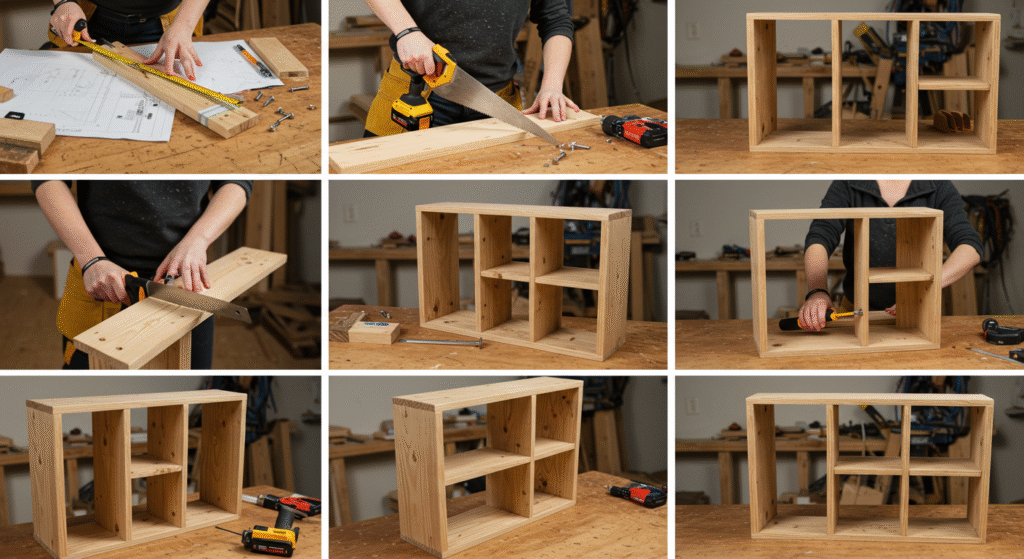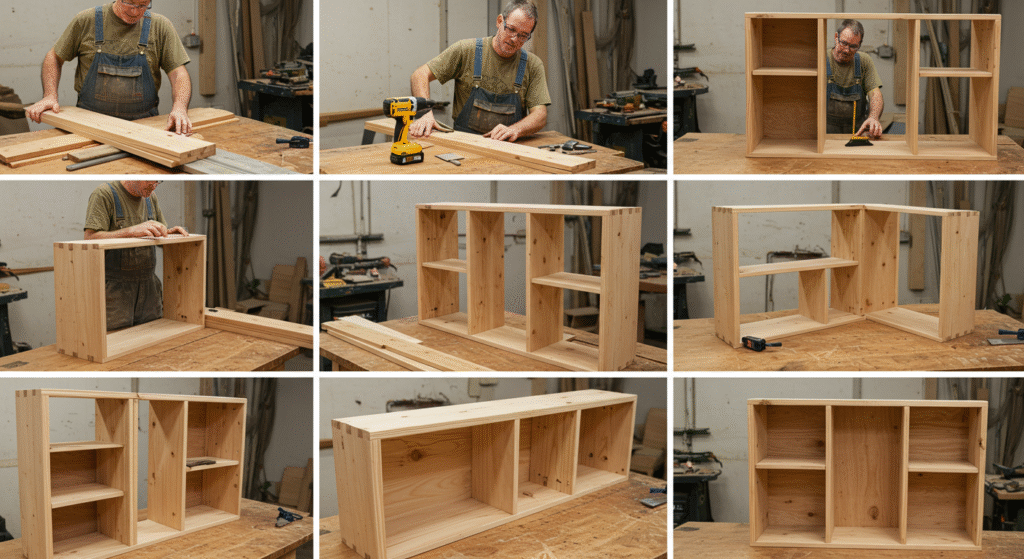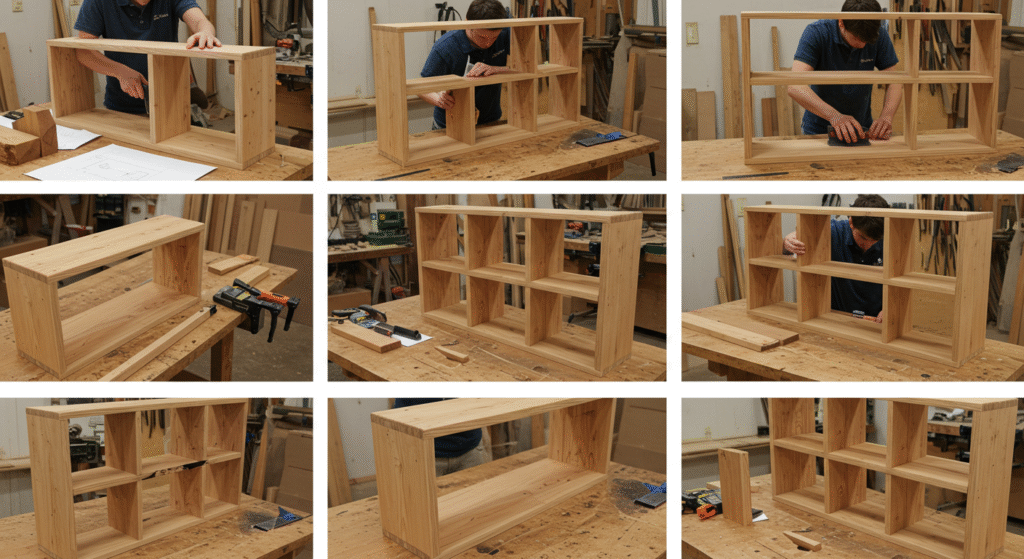In a world that moves ever faster, where convenience often overshadows craftsmanship, there’s something deeply grounding about the quiet simplicity of a DIY workspace. Tucked away in the sun-dappled corner of a garage, the heart of such a space lies not in its sophistication, but in its charm — an inviting mix of tools, wood, paint cans, and a sturdy workbench worn smooth by use. This article explores the appeal, function, and design of a cozy DIY workshop, and how you can transform your own garage into a creative haven.

The Allure of a Sunlit Garage Workshop
The garage has long been the sacred space for tinkerers, builders, and dreamers. Unlike a conventional home office or craft room, the garage offers room to breathe — both literally and creatively. When sunlight streams in through windows or an open door, it doesn’t just brighten the room; it energizes the mind. Natural light fosters a sense of openness, reduces eye strain, and makes detailed tasks like painting or sanding more pleasant. But beyond practicality, it turns a garage into a sanctuary.
There’s something poetic about the contrast: rough wood, cold steel, and tools of labor softened by warm golden rays cutting through floating dust particles. In this harmony of light and industry, creativity flourishes.

Building the Heart: The Workbench
Every great DIY workspace begins with a solid workbench — the command center of your creative enterprise. Whether built by hand or purchased ready-made, a good bench should be sturdy, spacious, and suited to your needs. For woodworkers, that might mean a vise for clamping down projects; for painters, a smooth, wipeable surface; for all, ample space to spread out.
Ideally, your workbench should be positioned near the best source of natural light, typically under or beside a window. Placing it strategically also allows for good airflow — essential if you’re working with fumes, sanding wood, or using power tools.
Storage is a major consideration here. Pegboards above the workbench offer customizable storage for tools you use frequently — hammers, wrenches, screwdrivers, and clamps. Shelving units or drawers below can house heavier equipment, sandpaper, or paints. Hooks for safety goggles and aprons make safety habits second nature.

Tools of the Trade: Equipping Your Space
A cozy garage workshop doesn’t require thousands of dollars in machinery. In fact, its charm often lies in the modesty and intention behind each tool’s presence.
Essential Hand Tools:
- Hammer – Your classic go-to for nails and minor demolition.
- Screwdrivers – Flathead and Phillips in multiple sizes.
- Handsaw – For those times when a power saw feels like overkill.
- Measuring Tape and Ruler – Precision starts here.
- Clamps – A DIYer’s third hand, especially when gluing or fastening.
Power Tools:
- Drill – A multi-purpose essential for creating holes or driving screws.
- Orbital Sander – For smooth finishes and surface prep.
- Jigsaw – Versatile for curved and detailed cuts.
- Shop Vacuum – Keeps the space clean and safe from fine dust.
Painting & Finishing:
- Paint Brushes & Rollers – In various sizes for different types of work.
- Drop Cloths – Protect your workspace and garage floor.
- Mixing Sticks and Paint Trays – Small tools that make a big difference.
As you develop your skills and projects become more ambitious, your tool collection will grow. The key is not how many you have, but how well you know and care for them.

Materials: Wood, Paint, and the Joy of Raw Potential
There’s a reason many DIY enthusiasts favor wood: it’s forgiving, customizable, and deeply satisfying to work with. Your workshop should include a designated place to store timber — preferably off the ground and away from moisture. Wall-mounted racks or vertical bins can help organize planks by size and type.
Next to the wood, you’ll likely find an assortment of paint cans — matte whites, vibrant reds, weathered greys. Old coffee cans or mason jars are perfect for mixing small batches or saving leftovers. Label everything clearly, including the date mixed or purchased, so nothing goes to waste.
Beyond paint, you might stock wood stains, varnishes, or sealants — each chosen for its unique finish. The smell of these materials, especially when warmed by sunlight, evokes a kind of nostalgic calm that only a hands-on creative space can provide.
Organization: Controlled Chaos
A DIY workshop naturally leans toward the chaotic. There’s always a project mid-step, a tool out of place, a spill waiting to be cleaned. But the most effective spaces operate within controlled chaos — where every item has a home, even if it occasionally wanders.
Invest in:
- Clear plastic bins for smaller items like nails, screws, and washers.
- Magnetic strips for storing metal tools within easy reach.
- Label makers or chalkboard labels to identify drawers and boxes.
- Mobile carts for rolling tools or paints to wherever you’re working.
The key is flexibility. A cozy DIY workspace doesn’t need to be pristine; it just needs to flow with your creative rhythm.

Comfort and Safety: Often Overlooked, Always Essential
Comfort can transform a cold garage into a warm retreat. Consider adding:
- A cushioned anti-fatigue mat at your bench.
- A space heater or fan, depending on your climate.
- A Bluetooth speaker or radio to set the mood.
- A stool or chair for longer sessions of detailed work.
Lighting matters too. Supplement natural light with overhead LEDs or clip-on task lamps. Don’t forget personal protective equipment: goggles, gloves, dust masks, and ear protection. Store these within easy reach and get in the habit of using them regularly.
Personal Touches: The Soul of the Space
What truly makes a garage DIY space cozy isn’t just its utility — it’s the personality behind it. A mug of coffee resting on the corner of the bench. An old flannel jacket hanging by the door. Photos of completed projects or plans pinned to the wall. A jar of old nails passed down from your grandfather’s toolbox.
This space is not just where things get made — it’s where memories are forged, skills are honed, and quiet satisfaction grows.
You might hang up vintage signs, display hand tools passed down through generations, or even incorporate plants into the space — succulents or ivy that thrive in indirect light and add life to the room. A chalkboard wall can be perfect for jotting down ideas, plans, or even motivational quotes.

Making It Yours
One of the most freeing aspects of a DIY workspace is that it evolves with you. Start small — a corner of the garage with a bench and some basic tools. As you build confidence and projects grow more ambitious, so too will your space.
You don’t need a massive budget or the latest gadgets. What you need is vision, patience, and a love for the process. Whether you’re building birdhouses, refurbishing furniture, or crafting gifts for loved ones, your workshop becomes a reflection of your creativity.
And when the late afternoon sun filters in, casting long shadows across your tools and wood shavings, you’ll realize — this little space, humble and handmade, is a sanctuary.

Conclusion
A cozy DIY workspace in a sunlit garage is more than just a place to build things; it’s a place to reconnect with yourself. In an era of constant distraction, it offers clarity. In a world of digital overload, it offers something tangible. With tools in hand and sunlight on your shoulders, you’re not just making — you’re living, crafting moments of calm, purpose, and pride.


